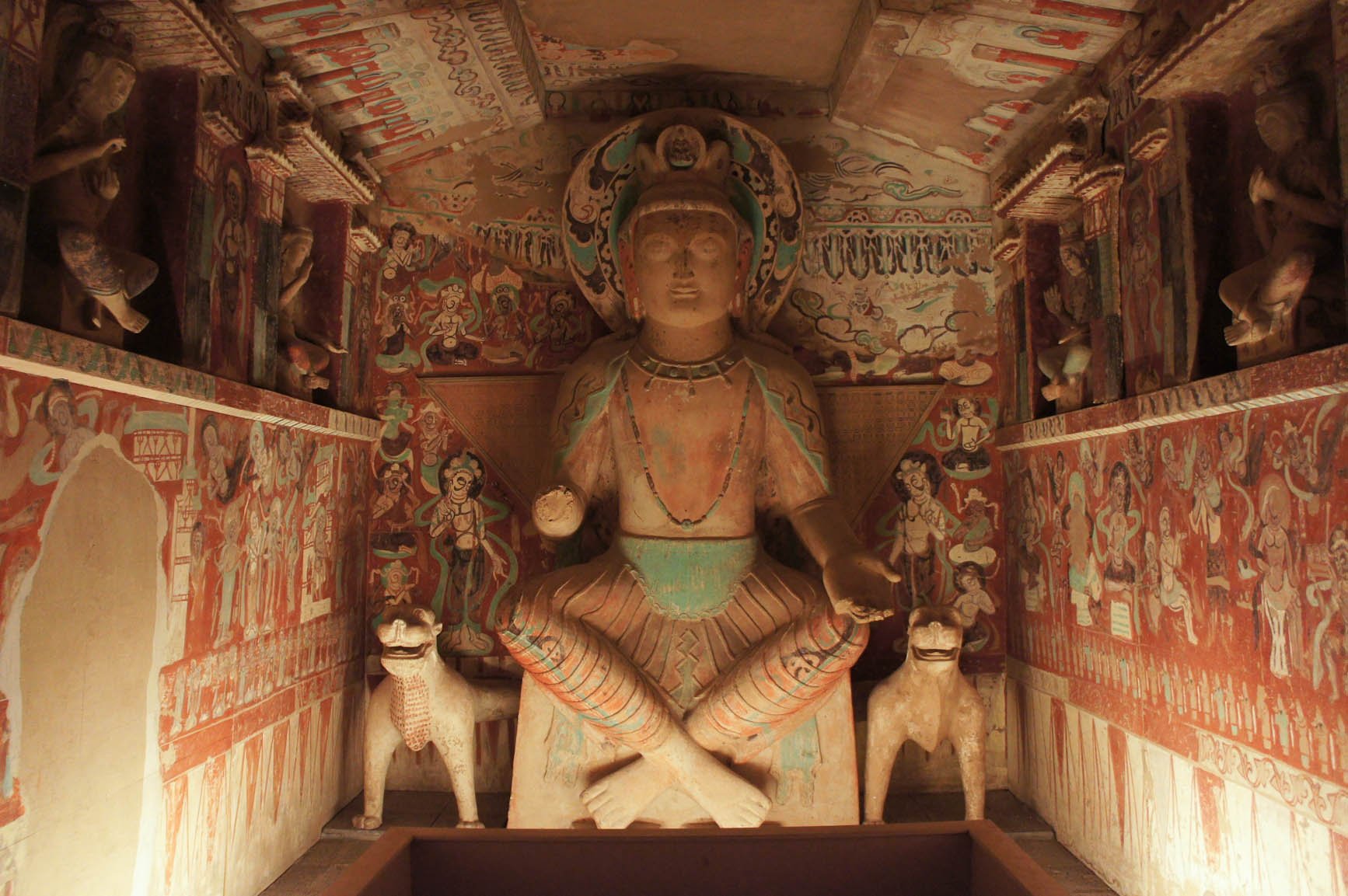MessageToEagle.com – The Mogao Grottoes, near the oasis town of Dunhuang in the Gobi Desert, China are where generations of Buddhist monks built hundreds of rock temples.
Many believe that Dunhuang (the town’s name means “blazing beacon”) is probably the most important historical site in China. Nearly five hundred grottoes remain, lined with painted clay sculptures and wall paintings that depict legends, portraits, customs, and arts of China.
They were discovered at the beginning of the 20th century and over time they revealed an enormous treasure trove of Buddhist art in form of manuscripts, sculptures, painted scrolls and wall paintings ranging in date from the 4th to the 14th centuries.
The cave temples preserve about 2,000 Buddhist sculptures, 45,000 square meters of murals and more than 60,000 texts.
The Mogao Caves – tell a story of art and Buddhism that began more than 1,500 years ago.
Today, Princeton scholars and students – in collaboration with the Dunhuang Academy in China – are exploring the significance of the site in history of China and this region.
Additionally, the site – the world’s largest repository of Buddhist painting – also possesses many of China’s oldest Buddhist paintings.
Ancient records say that in 366 CE, Buddhist monks began to carve the first caves into the cliff stretching about 1 mile along the Daquan River.
There is a beautiful story behind the creation of the “Caves of the Thousand Buddhas”. All started with a Buddhist monk Shamen Le Zun, who was travelling westwards towards Central Asia in search of the Buddhist truth.
One day, he had a vision of light and 1,000 Buddhas, which inspired him to carve the first cave in the middle of a desert oasis. After him, other monks joined him and carved their own caves; generations of Buddhist monks built hundreds of rock temples.
About 40 of them date from the Northern Wei-dynasty (385-557). More were added during the Sui-dynasty (581-618). Most of the caves were made during the Tang-dynasty (until ca. 750), when Buddhism and the Silk Route were in their prime.
See also:
Unanswered Questions Related To The Mysterious Huashan Caves
Ancient Secrets Hidden In The Piyang Caves – Mysterious Sacred Caves Of Tibet
Yungang Grottoes: Marvellous Treasure Of Ancient Buddhist Rock-Cut Architecture Is Now Restored
They are lined with painted clay sculptures and wall paintings that depict legends, portraits, customs, and arts of China. Caves in the complex came in every size. There were sleeping quarters, meditation niches, libraries, lecture halls, and halls to hold large ceremonies.
After 1000 AD, an incredible archive —with up to 50,000 documents, hundreds of paintings, together with textiles and other artefacts— had been sealed up in chamber adjacent to one of the caves (Cave 17), perhaps to protect the contents from invading armies.
Its entrance was concealed behind a wall painting and the trove remained hidden from sight for centuries. In 1900, it was discovered by Wang Yuanlu, a Daoist monk who had appointed himself abbot and guardian of the cave-temples. The first Western expedition to reach Dunhuang arrived in 1879.
More than twenty years later Hungarian-born Marc Aurel Stein, a British archaeologist and explorer, reached Dunhuang in 1907 and bought seven thousand complete manuscripts and six thousand in fragments, as well as several cases loaded with paintings, embroideries and other artifacts.
Later others followed after him.
The wall-paintings were done in dry fresco. The walls were prepared with a mixture of mud, straw, and reeds that were covered with a lime paste. The sculptures are constructed with a wooden armature, straw, reeds, and plaster.
The colors in the paintings and on the sculptures were done with mineral pigments as well as gold and silver leaf. All the Dunhuang caves face east.
Due to sandstorms and erosion, Mogao Caves are contantly in danger to be destroyed.
Beautiful interior of the caves can be admired – here.
First version of this article was originally published on November 18, 2014
Copyright © MessageToEagle.com. All rights reserved. This material may not be published, broadcast, rewritten or redistributed in whole or part without the express written permission of MessageToEagle.com








